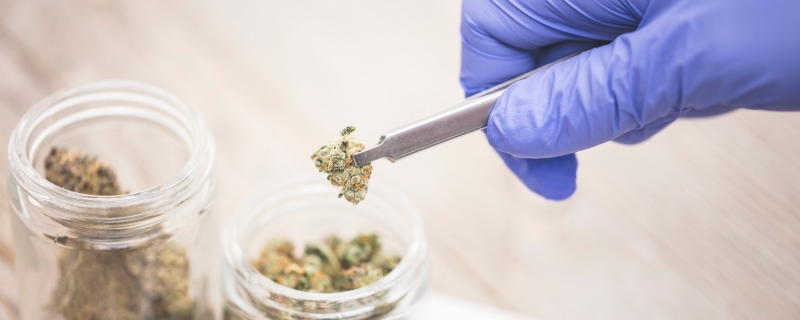The history of cannabis usage by humans dates back to at least the 3rd millennium BC in written history, and possibly further back by archaeological evidence

Cannabis is a species of the Cannabinaceae family, with a group of three plants known as Cannabis sativa, Cannabis indica, and Cannabis ruderalis. Cannabis is made up of more than 120 components, which are known as cannabinoids, but experts understand the effects of only two psychoactive compounds: cannabinoid cannabidiol (CBD) and tetrahydrocannabinol (THC). THC is believed to be responsible for the “high” when using cannabis. Cannabis has a wide range of therapeutic applications, ranging from cancer symptoms, Parkinson’s disease, post-traumatic stress disorder, ulcerative colitis, Crohn’s disease, multiple sclerosis, and other medical issues. However, its long-term use for recreation can lead to addiction and a series of health problems.
The history of cannabis usage by humans dates back to at least the third millennium BC in written history, and possibly further back by archaeological evidence. Cannabis was used for rituals and is found in pharmacological cults around the world. It was also known to the ancient Assyrians, who potentially utilized it as an aromatic. The Ancient Greeks used cannabis for human medicine and also as veterinary medicine to dress wounds/sores on their horses. Hemp seeds from the Cannabis sativa plant were discovered by archaeologists at Pazyryk suggest early ceremonial practices like eating by the Scythians occurred during the 5 BC to 2 BC confirming previous historical reports by Herodotus. In China, the psychoactive uses of cannabis have been described in the Shennong Bencaojing, which was written around 3 AD. The Chinese surgeon Hua Tuo (c. 140-208) is credited with being the first person to use cannabis as an anesthetic. As a drug, it usually comes in the form of dried flowers (marijuana), resin (hashish), or various extracts collectively referred to as hash oil.
At present countries that allow the medical use of whole-plant cannabis include Australia, Canada, Chile, Colombia, Germany, Greece, Israel, Italy, the Netherlands, Peru, Poland, Portugal, and Uruguay. Medical cannabis can be administered through various methods, including capsules, lozenges, tinctures, dermal patches, oral or dermal sprays, cannabis edibles, and vaporizing or smoking dried buds. There is insufficient data to draw strong conclusions about the safety of medical cannabis. As per the US Food and Drug Administration, Cannabis sativa, Cannabis indica are listed as Schedule I medicinal plants; a third species, Cannabis ruderalis has few psychogenic properties.
According to the US Department of Agriculture, hemp seeds contain almost as much protein as soybeans, with every 30 grams of seeds contains 9.47 g of proteins, 2.60 g of carbohydrates, 1.2 g of fats, 11.43 g of polyunsaturated fats, with just 1.38 g of saturated fatty acids. Apart from an impressive array of vitamins, minerals (such as calcium, iron, magnesium, potassium, and zinc), and a healthful ratio of omega-3 to omega-6 fatty acids, hemp seeds are especially rich in an amino acid called arginine, which has benefits for heart health. According to the article in Food Chemistry, hemp seed extract has antioxidant effects from CBD content, which may have neuroprotective and anti-inflammatory effects that may also help to regulate the immune system.
Using cannabis can have a range of short-term side-effects which may vary based on the method of consumption. If you smoke cannabis, you’ll feel the effects within minutes. But if you orally ingest cannabis as a capsule, it may be several hours before you feel anything. Some are beneficial, but others are more concerning. According to the US National Institute on Drug Abuse, people who consume cannabis before the age of 18 are four to seven times more likely to develop a disorder (elevated heart rate, euphoria, increased appetite, mood changes, decreased coordination, decreased concentration, decreased energy, difficulty solving problems, memory problems, insomnia) than those who start using it later in life. To this end, cannabis has been used as a possible treatment for several neurological disorders including epilepsy, amyotrophic lateral sclerosis, Huntington’s disease, Parkinson’s disease, dementia, and traumatic brain injury, to name a few.
A study published by LaFrance et al. (2020) in the Journal of Affective Disorders, showed that cannabis reduced post-traumatic distress disorder by half, at least in the short term. Researchers have discovered the hidden antibiotic potential of a non-psychoactive cannabis compound called cannabigerol which helped control methicillin-resistant Staphylococcus aureus (MRSA). Tel Aviv University researcher finds CBD in marijuana can enhance the bone healing process. So from a medicinal point of view Cannabis plants are proven to be useful by researchers.